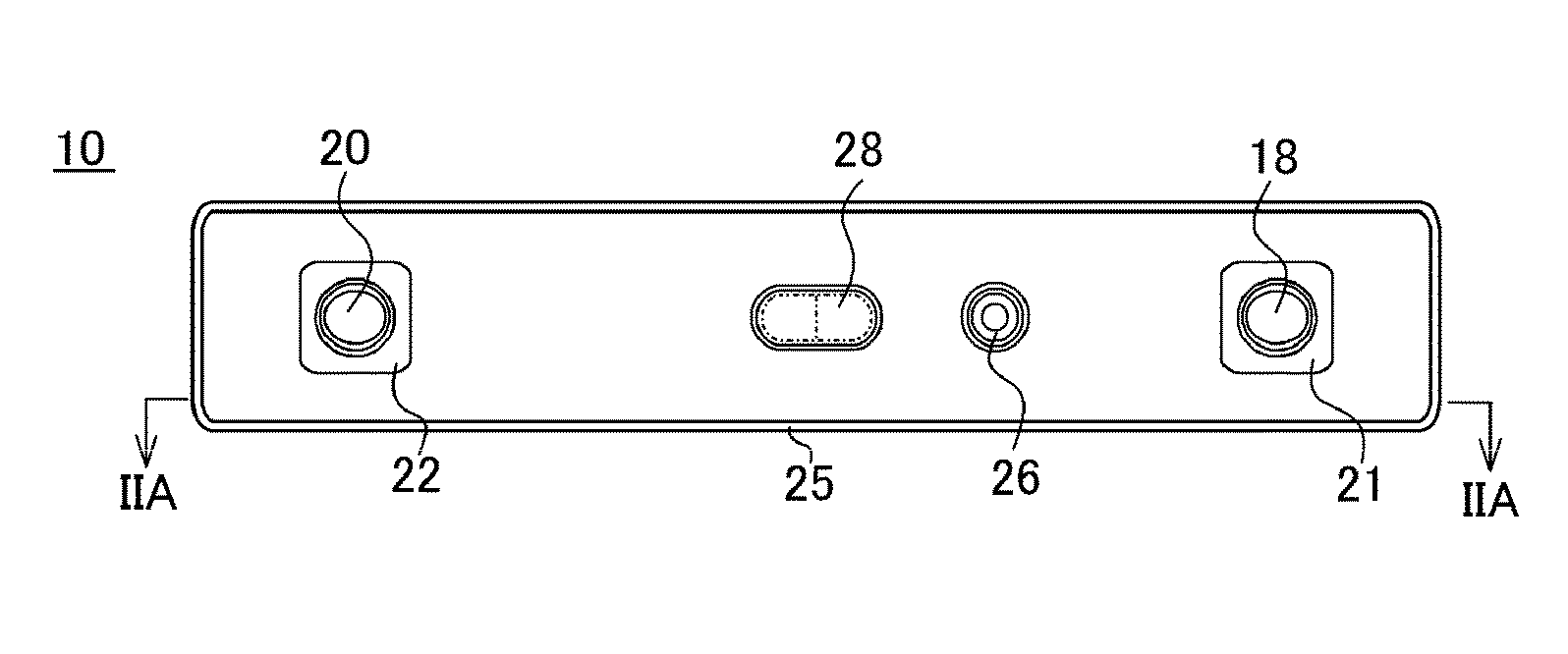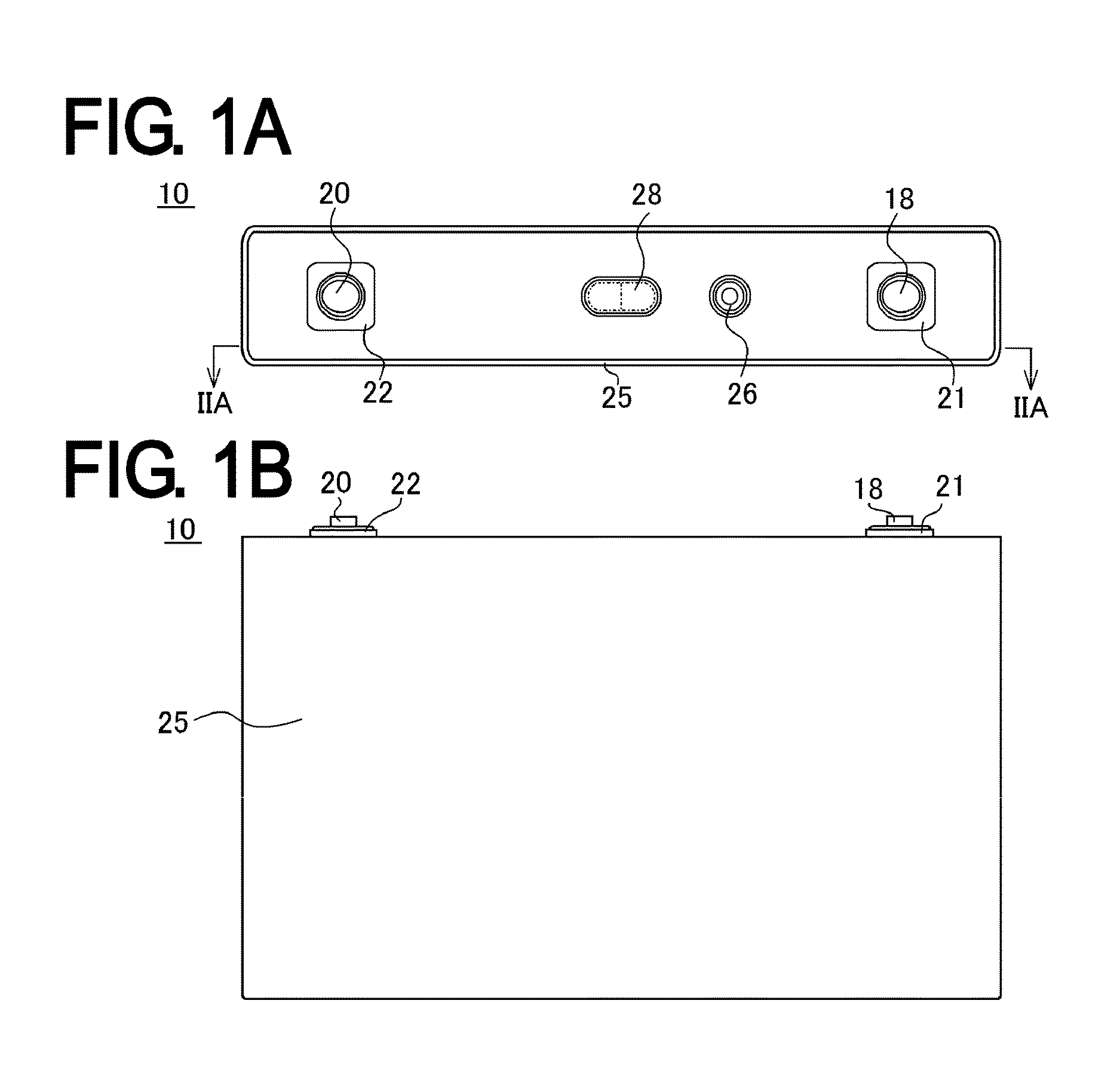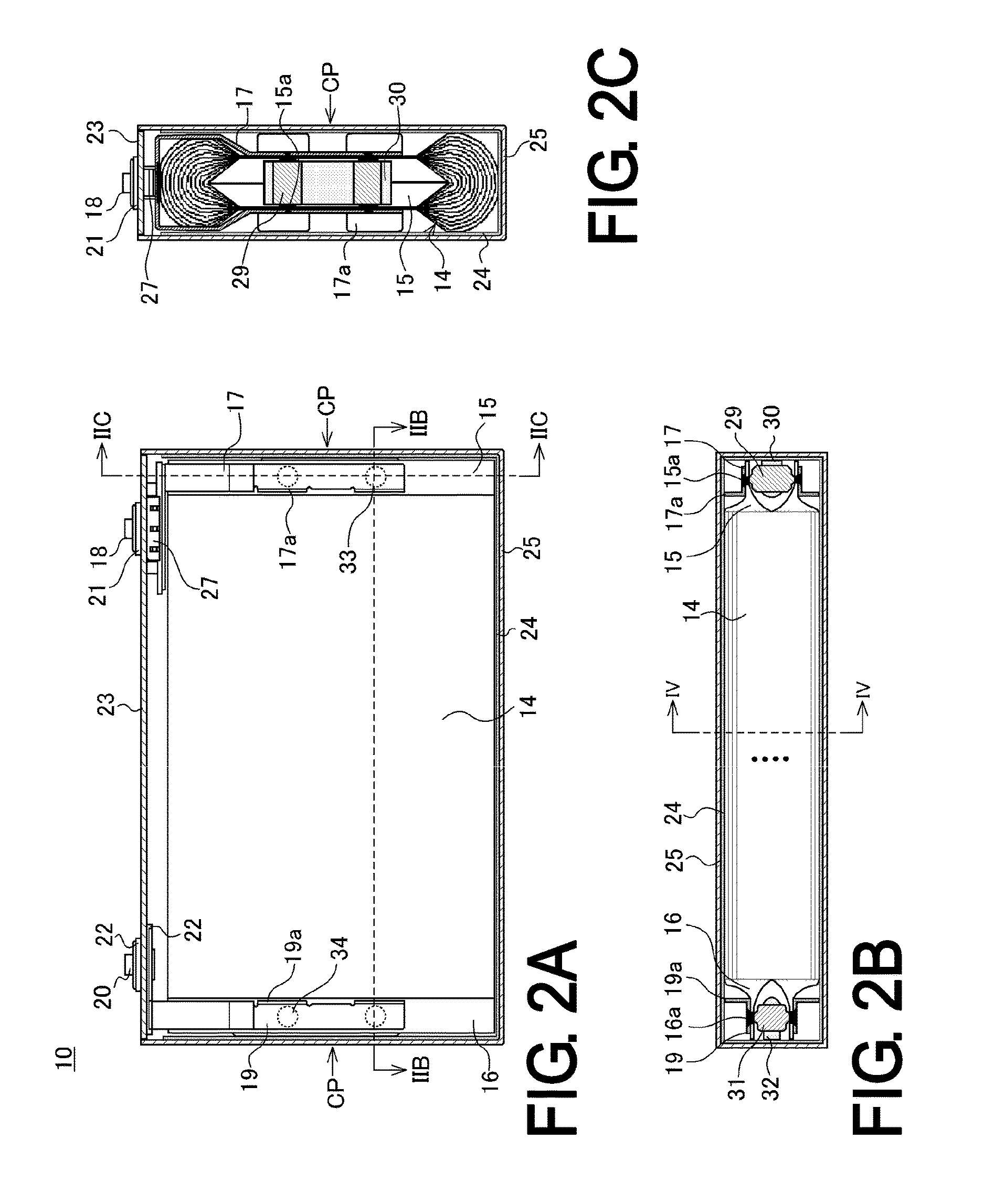Nonaqueous electrolyte secondary battery
a secondary battery and electrolyte technology, applied in the direction of wound/folded electrode electrodes, cell components, sustainable manufacturing/processing, etc., can solve the problems of increasing the viscosity of nonaqueous electrolyte, affecting the performance of the battery, and the reaction inside the electrode is likely to occur in a non-uniform manner, so as to prevent the decomposition of nonaqueous electrolyte and improve the cycling characteristics. , the effect o
- Summary
- Abstract
- Description
- Claims
- Application Information
AI Technical Summary
Benefits of technology
Problems solved by technology
Method used
Image
Examples
embodiment
[0041
[0042]First, a prismatic nonaqueous electrolyte secondary battery in accordance with an embodiment will be described with reference to FIGS. 1 to 4. As shown in FIG. 4, this nonaqueous electrolyte secondary battery 10 includes a flat winding electrode assembly 14. In the electrode assembly 14, a positive electrode 11 and a negative electrode 12 are wound while being insulated from each other with a separator 13 interposed therebetween. The winding electrode assembly 14 has its outermost side covered with the separator 13 and has the negative electrode 12 disposed on a further outer side than the positive electrode 11.
[0043]As illustrated in FIG. 3A, a positive electrode 11 is produced by the following process: a positive electrode active material mixture is applied onto both sides of a positive electrode substrate of aluminum foil; the resultant object is dried and extended by applying pressure; and the positive electrode 11 is slit so as to expose the aluminum foil in a strip ...
PUM
| Property | Measurement | Unit |
|---|---|---|
| melting area | aaaaa | aaaaa |
| melting area | aaaaa | aaaaa |
| thickness | aaaaa | aaaaa |
Abstract
Description
Claims
Application Information
 Login to View More
Login to View More - R&D
- Intellectual Property
- Life Sciences
- Materials
- Tech Scout
- Unparalleled Data Quality
- Higher Quality Content
- 60% Fewer Hallucinations
Browse by: Latest US Patents, China's latest patents, Technical Efficacy Thesaurus, Application Domain, Technology Topic, Popular Technical Reports.
© 2025 PatSnap. All rights reserved.Legal|Privacy policy|Modern Slavery Act Transparency Statement|Sitemap|About US| Contact US: help@patsnap.com



